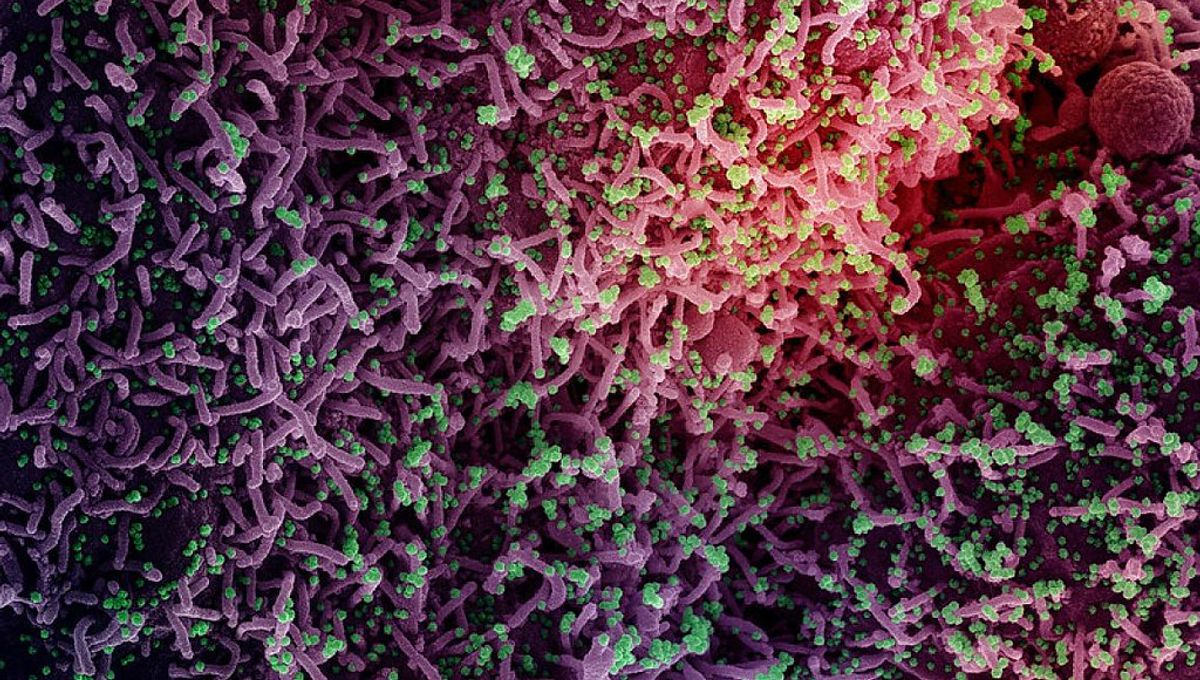
The tobacco mosaic virus was the first virus to be discovered by science. Viruses have been around for billions of years, but they were only scientifically described towards the end of the 19th century. Even then, it took decades of work to fully get to grips with these baffling “invisible” agents.
The first step in the discovery of viruses came in 1876 when Adolf Mayer, a German agricultural chemist and director of the Agricultural Experimental Station at Wageningen, described a strange mottling disease that affected tobacco plants. He believed it was caused by bacteria or fungi, but his tests and microscopical examinations failed to find any organism.
A breakthrough came in 1892 at the hands of Russian botanist Dmitri Ivanovsky, who found that the infected plant’s sap remained infectious after passing through a bacteria-retaining filter. Ivanovsky knew he had found something new, although some believe he hadn’t truly understood the gravity of the discovery lying ignorant of him.
In 1898, Dutch microbiologist Martinus Beijerinck independently replicated Ivanovsky’s experiments and drew a slightly sturdier interpretation. Beijerinck argued that the experiment showed tobacco mosaic disease was not a bacterium, but something he called a “contagium vivum fluidum,” or contagious living fluid. He then began to use the word “virus” to describe the non-bacterial nature of the pathogen.
Around this time, several other disease-causing pathogens were found to pass through the bacteria-retaining filter, including foot-and-mouth disease, rabbit myxomatosis, African horse sickness, and fowl plague. However, the exact nature of this “invisible” agent was still unclear.
Identifying the cause of yellow fever was an especially big moment in the history of virology. During the Spanish–American War of 1898, the US army was devasted by yellow fever upon arriving on the shores of Cuba. Through the work of Walter Reed, James Carroll, Aristides Agramonte, and Jesse William Lazear, it was shown that the disease could be transmitted through the filtered blood serum from an infected patient. This discovery made yellow fever the first human infectious disease to be attributed to a virus.
It wasn’t until 1931 with the invention of the electron microscope that scientists were able to see viruses. Once again, it was the tobacco mosaic virus that took the honor of becoming the first virus captured in an image.
Another huge moment occurred in the 1950s with the work of Rosalind Franklin. She used X-ray crystallography to define the structure of the tobacco mosaic virus as a single-stranded RNA molecule bounded by a protein membrane. Her other work helped to establish that DNA was a molecule consisting of two chains, which led to the famous findings of DNA’s double-helical structure. James Watson and Francis Crick took most of the credit for this discovery, but Franklin’s contribution shouldn’t be understated.
Over a century after their discovery, viruses still have the power to puzzle, amaze, and cause devastation.
Today, there is still discussion as to whether viruses are “living” entities. Viruses are effectively parasites. They require a living cell for reproduction and cannot be grown independently outside of their host like bacteria and other free-living microorganisms. They are, however, made out of DNA or RNA, the chemical building blocks that are central to life as we know it.
Most scientists currently believe they do tick enough boxes to be considered “living,” although viruses are still surprising us through new discoveries.
All “explainer” articles are confirmed by fact checkers to be correct at time of publishing. Text, images, and links may be edited, removed, or added to at a later date to keep information current.
Source Link: What Was The First Virus Discovered By Science?